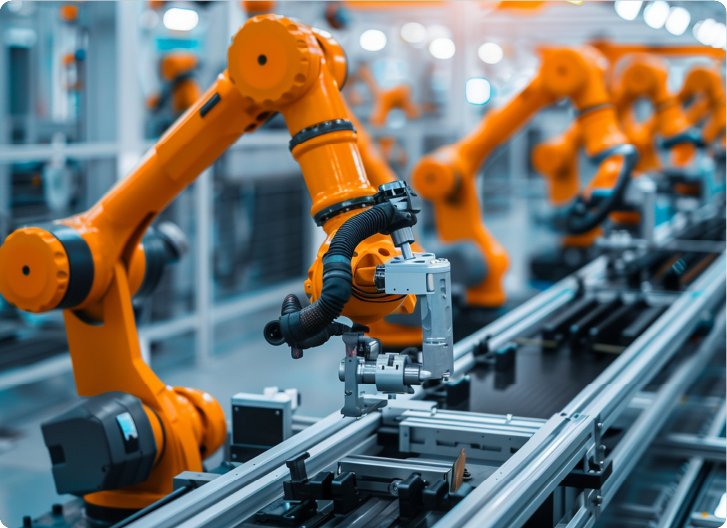
The contemporary manufacturing sector relies heavily on CNC Turning and CNC Milling as fundamental processes. Although both processes encompass precision, advanced technology, and automation, they use different operational methods. Knowing how these processes differ is crucial for making the right decision.
In general, during CNC Turning, the machine tool spins the workpiece as a stationary cutting tool proceeds to eliminate material from its surface. The production technique serves primarily to manufacture cylindrical items. The part rotation in a lathe operation allows the tool to remove material through its spinning motion. Shafts, pins, and rings are among the most suitable products to manufacture with the turning process.
On the other side, CNC Milling uses rotating tools that separate material from unmovable workpieces. It offers all-around ability because it can make flat surfaces and complex geometries, and three-dimensional shapes. Milling machines perform best due to their ability to work on vertical and horizontal axes for generating complex designs.
The two manufacturing methods depend on computer numerical control technology (CNC) to perform accurate automated operations. The CNC turning process produces optimal outcomes for round symmetrical parts, but CNC milling delivers its best results for creating complex shapes along with intricate details. The selection of manufacturing techniques depends on which attributes you require most. Let’s explore their distinct aspects.
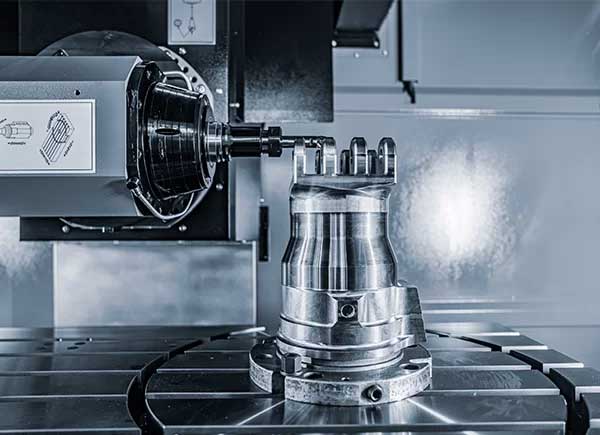
The CNC milling machine operates by changing the tool location while rotating a cutting tool to remove material from the workpiece. It operates in various directions as it completes its task to shape complex parts. It finds its primary use when creating parts that require either small, detailed elements or smooth, flat components.
During CNC milling, the fixed material remains stationary while the cutting tool operates to create movement against it. It offers three to five axes of operation according to part complexity requirements. The system achieves tough-to-replicate complex shapes because of its flexibility. Moreover, the machine operates with a broad spectrum of materials, which includes metals and plastics, to manufacture components of all scales.
In addition, the milling process delivers optimal outcomes for projects requiring elaborate cuts in addition to different surface finishes and exact holes. The production of accurate parts at high speeds is possible through CNC milling technology, regardless of whether you need prototype creation or component manufacturing.
Multiple directional movement allows the milling machine to perform cutting functions from any angle. The machine operates with various cutting instruments such as drills, end mills, and face mills for different work requirements. The machine can operate with automatic tool changes during extended periods of work through programming.
The manufacturing procedure begins by fixing the material, and the cutting tool performs axis-based movement to eliminate material. The tool implements precise measurements to form each part's shape during every cycle. With CNC milling technology, you can conduct drilling operations combined with surface finishing and boring processes as a single continuous procedure.
Programming stands as the initial step of the CNC milling process. Users transfer their design information to the machine software. The material placement takes place on the worktable, after which the operation begins. The cutting tool executes its motion over the material surface to perform the shaping operation.
The tool carries out the material removal step by step as per the designed programming. The machine makes continuous adjustments to reach better precision levels. The verification process for accuracy and completion completes the operation.
CNC milling machines have several key components that work together.
The spindle holds the cutting tool and spins it. It’s what the cutting does by rotating at high speeds.
The worktable is where you place your material. It moves to position the workpiece under the tool for cutting.
These tools remove material from your part. They come in different shapes, sizes, and types for various cuts.
The axes control the movement of both the tool and the workpiece. CNC mills usually work with 3 to 5 axes for flexibility.
This is where you program the machine. It lets you input designs and tweak settings to get the perfect cut.
The tool changer automatically switches tools during the job. This keeps the process smooth and fast without stopping.
The coolant system keeps everything cool. It reduces heat and friction while cutting, making your tools last longer.
Here are some of the common milling operations:
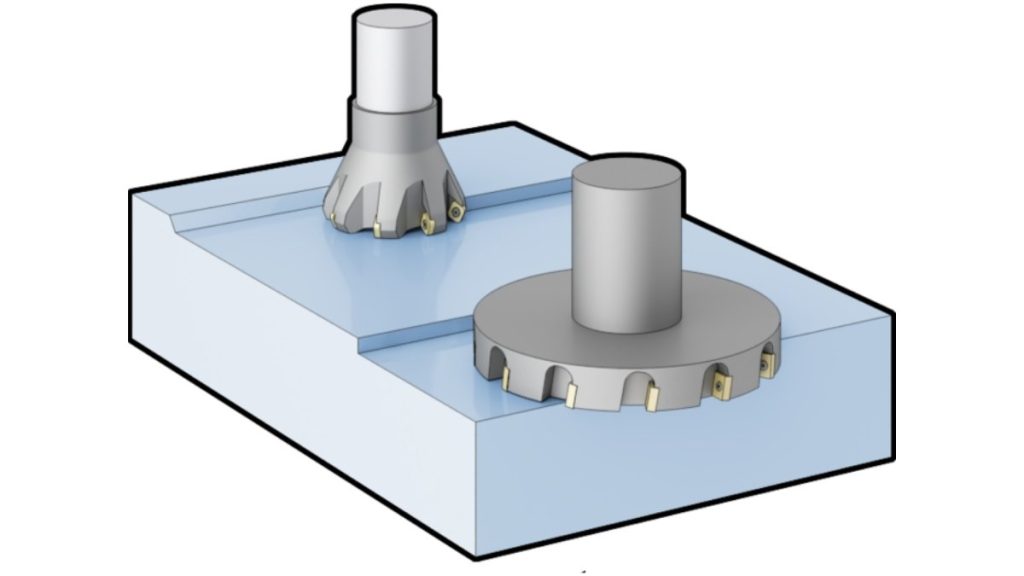
Face milling represents a widely conducted operation in CNC milling systems. The tool crosses the workpiece surface during this operational sequence. It implements a removal process that produces a flat, polished surface from the top. The application of face milling provides the best outcome for smooth finishes or surface flattening before additional machining operations.
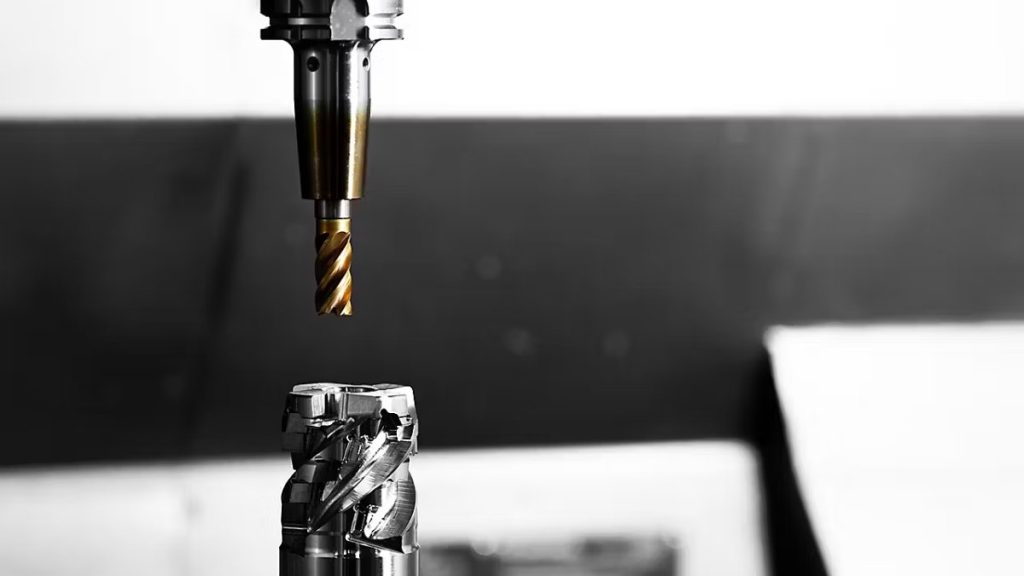
Both sides and the end of the tool used in end milling feature tooth surfaces. Such a design of the cutting tool enables simultaneous horizontal and vertical cuts. The tool functions effectively for making slots and pockets, and also produces intricate shapes. End milling tools serve detailed or precise operations because their movement between X and Y axes enables cutting in multiple directions.
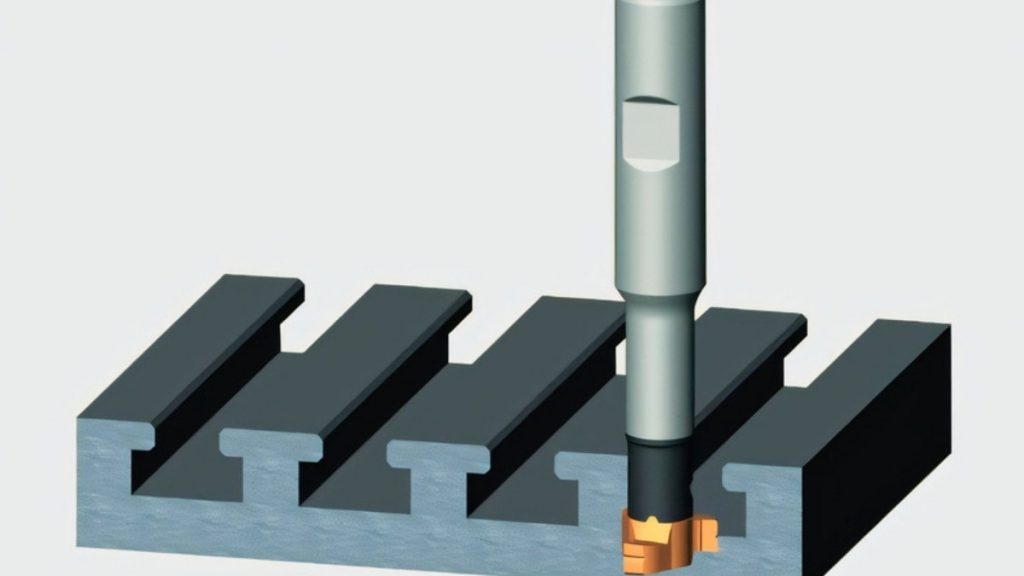
Slot milling exists as a specialized tool for making slots along with grooves and channels in the workpiece. During the slot manufacturing operation, the tool follows a predefined course to eliminate material from the workpiece. Slot milling allows you to cut precise slots of basic forms and elaborate shapes with different depth requirements.
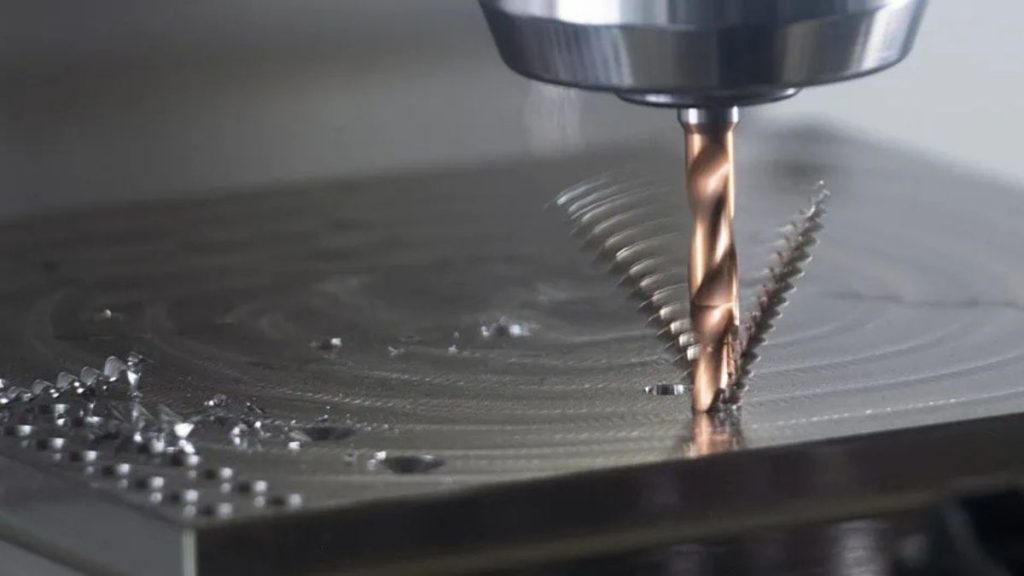
CNC milling applications use drilling as one of their operations to cut holes into workpieces. A vertical movement of this tool creates holes with chosen diameters in the workpiece material. The drilling equipment permits users to create both straight holes and angled holes to match their design needs. The chosen tool for drilling operations will determine whether the process requires specialized drills or end mills, according to hole requirements.
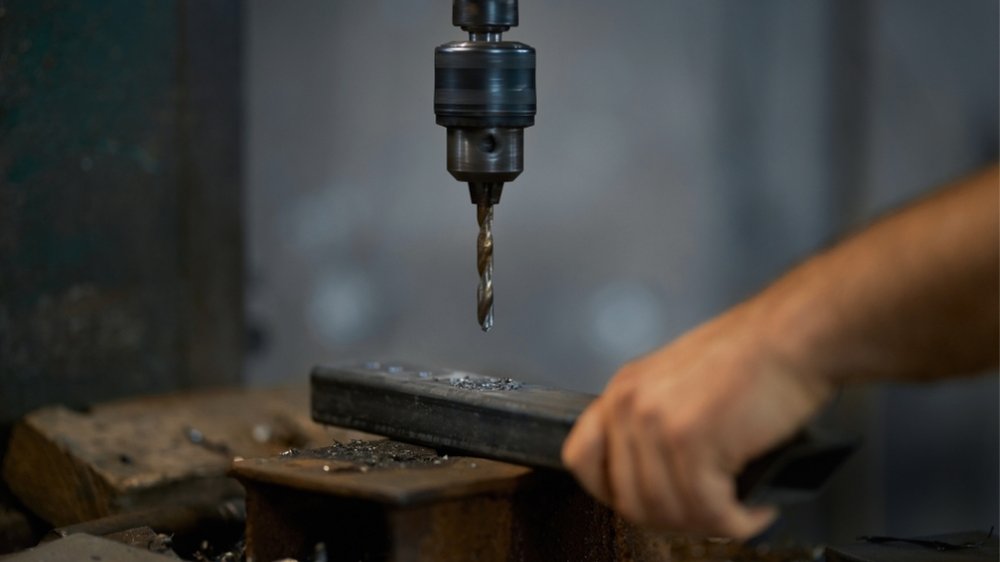
The procedure of boring enables technicians to extend the dimensions of present holes with exact measurements. The process occurs after drilling to produce precise hole dimensions and achieve better surface quality. The process of boring enables manufacturers to achieve higher tolerances, which makes it appropriate for producing precise holes.
Tapping features as the process that produces threaded interior surfaces within holes. Internal threading in a drilled hole occurs through the rotation of a tap as the cutting tool. During this operation, you can generate strong threaded bonds for screws and bolts which enables creation of sturdy connections inside your manufactured part.
The main purpose of contouring operations is to generate both curved surfaces and rounded features on parts. The tool traces the material surface to delete material while achieving accurate shapes. The precise nature of contouring makes it the perfect choice to shape rounded edges and curves and complex patterns of any dimension.
The process of pocket milling helps manufacturers produce broad flat areas, which they refer to as pockets within their workpiece. The tool makes sequential strokes across the material, which successively remove substance to create an opened area of specified depth. The operation produces internal cavities and pockets throughout parts, which normally occur in housings or blocks.
CNC milling possesses high versatility. It can operate effectively on different materials.. The process can machine an extensive range of materials because it effectively works with parts needed for the automotive, aerospace, and consumer product manufacturing. Here are some frequent materials, CNC milling can process;
Metals: Generally, it operates on metals, like aluminum and steel and brass, and titanium. The technology enables professionals to manufacture strong details using widespread industrial materials that need both durability and strength characteristics.
Plastics: Plastic materials are the top choice for CNC milling operations. The commonly used engineered grade thermoplastics are ABS, acrylic and nylon, and polycarbonate materials for their manufacturing needs. Plastics provide easier machinability when compared to metals, and CNC milling produces polished finishes on such materials. The manufacturing process proves advantageous when producing detailed plastic components that must maintain tight manufacturing requirements.
Composites: Milling machines can handle composites with the same level of efficiency. When processing carbon fiber or fiberglass materials, specialized equipment is required. The production of lightweight, durable parts from CNC milling operations serves aerospace requirements that demand minimal weight additions.
Wood & Foam: The CNC milling machine provides effortless, detailed carving abilities for wood and foam materials when used for prototyping and models, and woodworking applications. The production of complex designs in low-density substances through CNC milling occurs primarily in applications outside industrial manufacturing.
CNC milling technology supports the processing of various substance types, including heavy metals and delicate plastics, alongside other materials. The selection of an appropriate machine setup, together with appropriate tooling, enables users to reach optimal results on their workpiece.

A rotating workpiece that undergoes shaping through a fixed cutting tool constitutes the process of CNC turning. The spinning material represents the main difference between turning and other methods. The technique specializes in producing cylindrical products, starting from shafts up to bolts and all kinds of round components. The moving tool forms the part by tracing its complete length.
It works with either vertical or horizontal motion while it spins the part at rapid speeds. The tool possesses capabilities to extract material from both external and internal areas of the part structure for exact dimensional control during operations. Diverse part elements, including grooves and tapers, and threaded sections, become possible using this process with exacting precision. Production runs that require high volume benefit enormously from CNC turning machines, which operate with speed and low cost. A circular-shaped component requires CNC turning to process it with maximum efficiency.
Workpiece rotation occurs during CNC turning operations because a cutting tool forms the desired shape. High-speed rotation makes the material suitable for precise cutting operations along the length. The machine controls a cutting tool through different axes during substance removal to create specific shapes. The CNC turning process is perfectly suited for producing circular and cylindrical parts, including shafts and bolts. Rapid production along with efficiency is possible due to this process, particularly in high-volume situations. The system masters both external as well as internal cuts without any difficulties.
The process starts with programming the machine. The workpiece is secured on the lathe, ready to spin. The cutting tool then moves along the material. It gradually removes material to form the desired shape. The machine makes precise cuts based on the program. Once the job is done, the part is inspected for accuracy.
The key components of CNC Turning include:
The chuck holds your part nicely and tightly. It keeps it steady while it spins fast.
The spindle spins your part in the chuck. It gives the speed needed for clean cuts.
This is the part that does the cutting. It moves along your part and removes material.
The turret holds all your cutting tools. It rotates and switches tools during the job.
The bed supports everything on the machine. It keeps things stable while you’re cutting.
The tailstock helps support longer workpieces. It holds the other end while it spins.
You use this to run your program. It lets you adjust settings and start the job.
Here are some of the common operations of CNC turning:
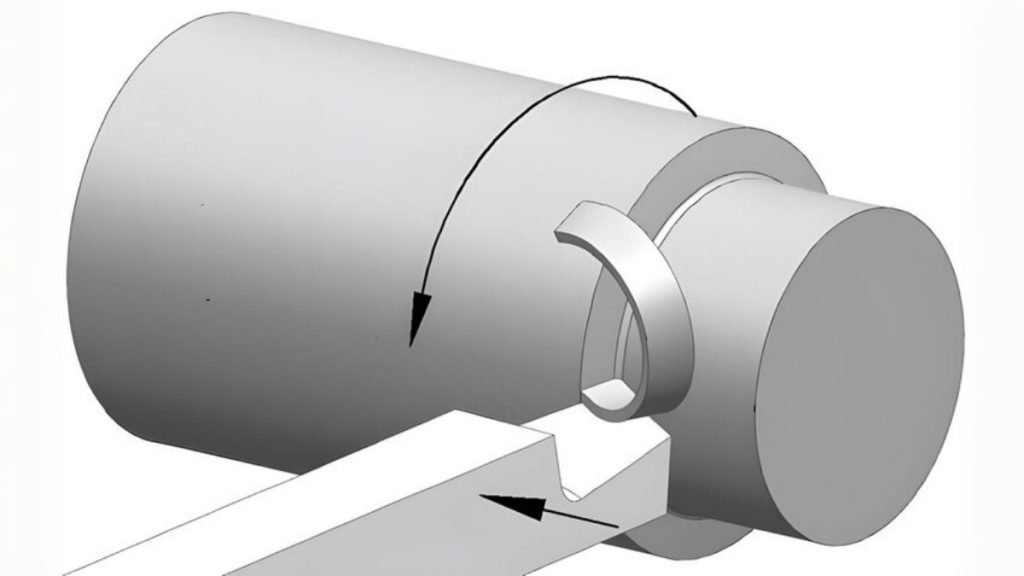
In straight turning, the tool moves along the part’s length. It removes material to reduce the diameter evenly. You use this when you need a clean, straight surface on your part. It’s simple but super effective for shaping rods and shafts.
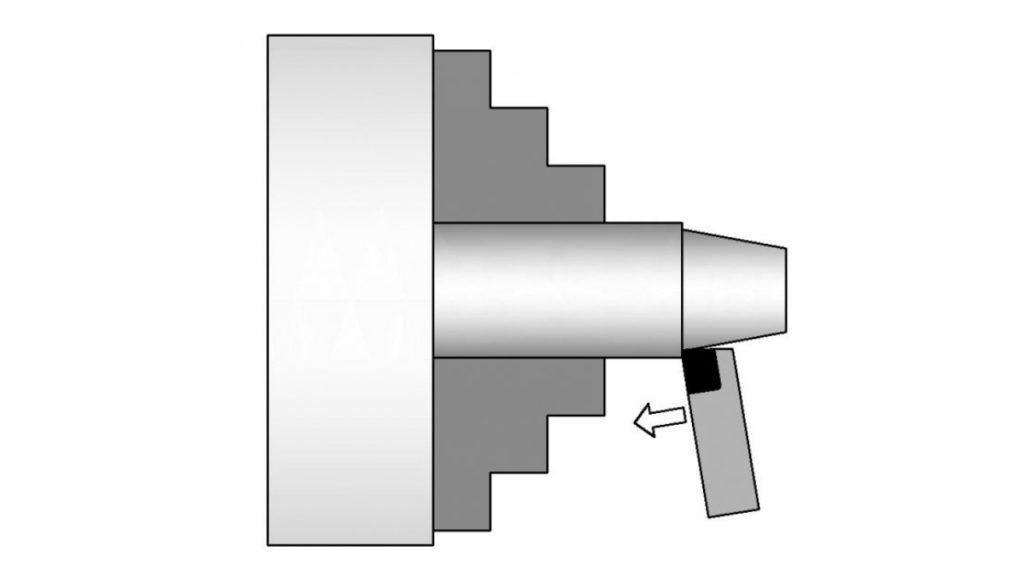
Taper turning shapes your part into a cone-like form. The tool moves at an angle instead of straight. This creates a surface that gradually narrows or widens. You use this when the design calls for a tapered feature.
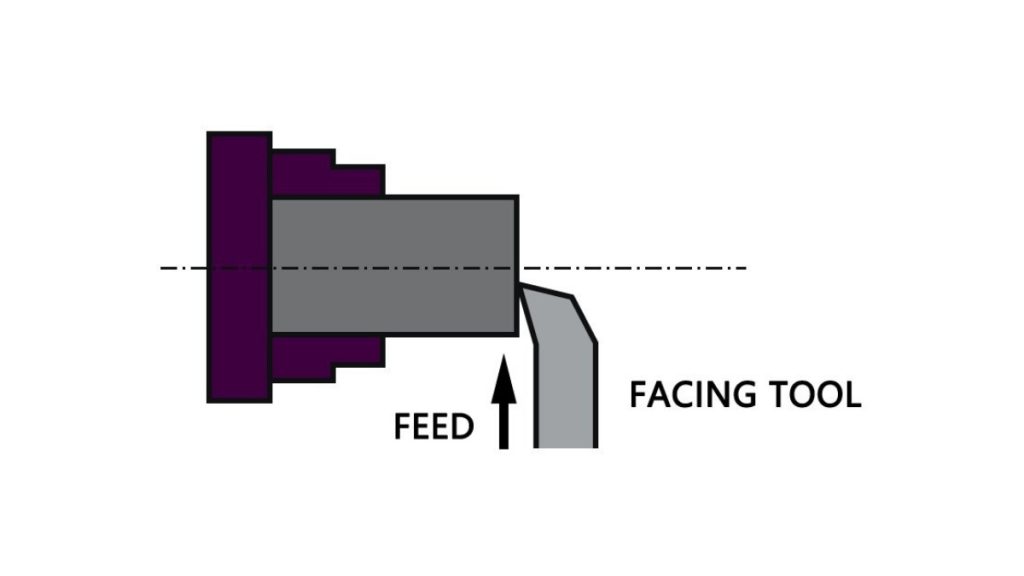
Facing cuts at the end of your part. It makes a flat surface at the face of the workpiece. The tool moves from the center outward or vice versa. You usually do this first to prepare the part.
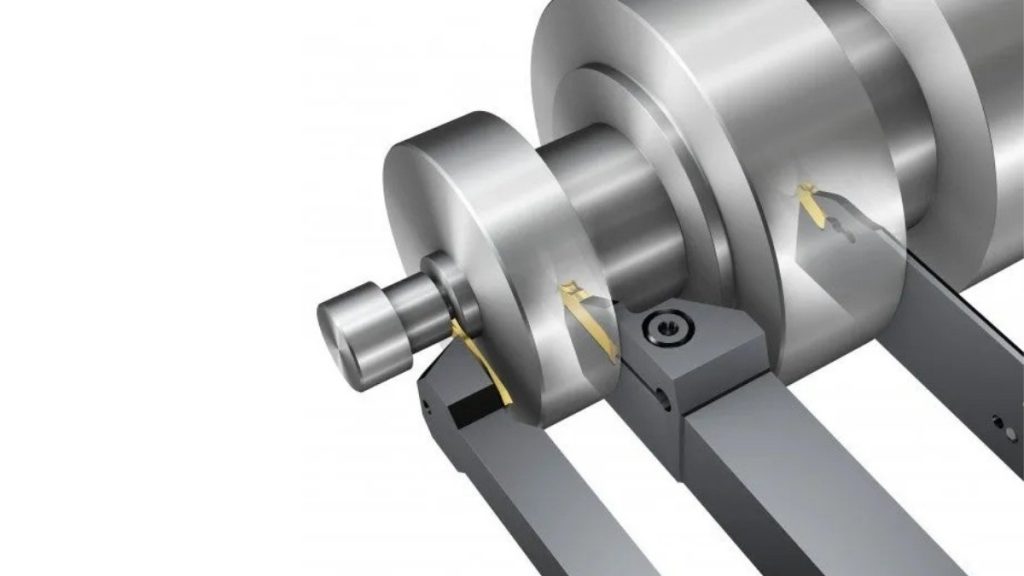
Grooving adds narrow channels or recesses to your part. The tool cuts into a specific section of the diameter. It’s great when you need snap fits or O-ring seats. You can groove on the outside or inside surface.
Threading cuts spiral grooves into the part. It forms threads for screws or bolts. The tool moves in sync with the rotating part. You can cut both internal and external threads here.
Parting separates the finished part from the raw stock. The tool moves directly into the spinning material. It slices through the part with a thin blade. This is usually the final step in the process.
Boring enlarges an existing hole inside your part. The tool goes into the part’s interior to refine the diameter. It’s useful when you need precise internal dimensions.
Let’s break it down side by side. This way, you can see how both methods work and where they shine. Here’s a simple, straight-to-the-point comparison table:
Table: CNC Milling Vs Turning
| Feature | CNC Milling | CNC Turning |
| How it works | The tool spins and cuts the material. | The material spins while the tool stays still. |
| Best for | Complex, flat, or 3D-shaped parts. | Round, tube-like, or cylindrical parts. |
| Material movement | The material stays still during cutting. | The material rotates quickly while cutting. |
| Tool movement | The cutting tool moves on several axes. | The tool moves along one or two axes. |
| Surface shapes | Great for detailed or angled surfaces. | Best for smooth, round surface finishes. |
| Tool type | Uses multi-point rotating cutting tools. | Uses single-point cutting tools instead. |
| Setup complexity | Needs more setup for complex parts. | The setup is simpler for basic part shapes. |
| Material compatibility | Works with metal, plastic, wood, and composites. | Works with metal, plastic, and some composites, too. |
| Production speed | Slightly slower with very complex parts. | Faster for high-volume, symmetrical pieces. |
| Precision level | Very precise with the right programming. | Also highly precise with tight tolerances. |
Your business needs determine whether CNC milling or turning would be most suitable. Apexrapid offers both services with high precision. Our team can produce both complex parts and simple parts according to your requirements.
We uphold ISO certifications to adhere to industry standards, and our in-house machining is laced with top-of-the-line machine technology that delivers both smooth and exact results. We meet customers' needs for rapid service completion. Our experts provide comprehensive customer support throughout the entire process to help you every step of the way.
CNC milling Vs CNC turning, both comprise unique advantages in their operational fields. CNC milling creates exceptional complex shapes and detailed features because of its capabilities. In contrast, CNC turning stands as the best option when you need the accurate production of round cylindrical objects.
Your project requirements will determine whether you should use milling or turning operations. Accurate and efficient results are available through both processes, although proper selection between them becomes crucial. The selection of your next machining project depends on your understanding of how CNC milling and CNC turning differ from each other. Apexrapid provides you with two distinct services to deliver optimal results for all your unique manufacturing needs.
